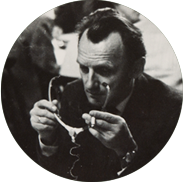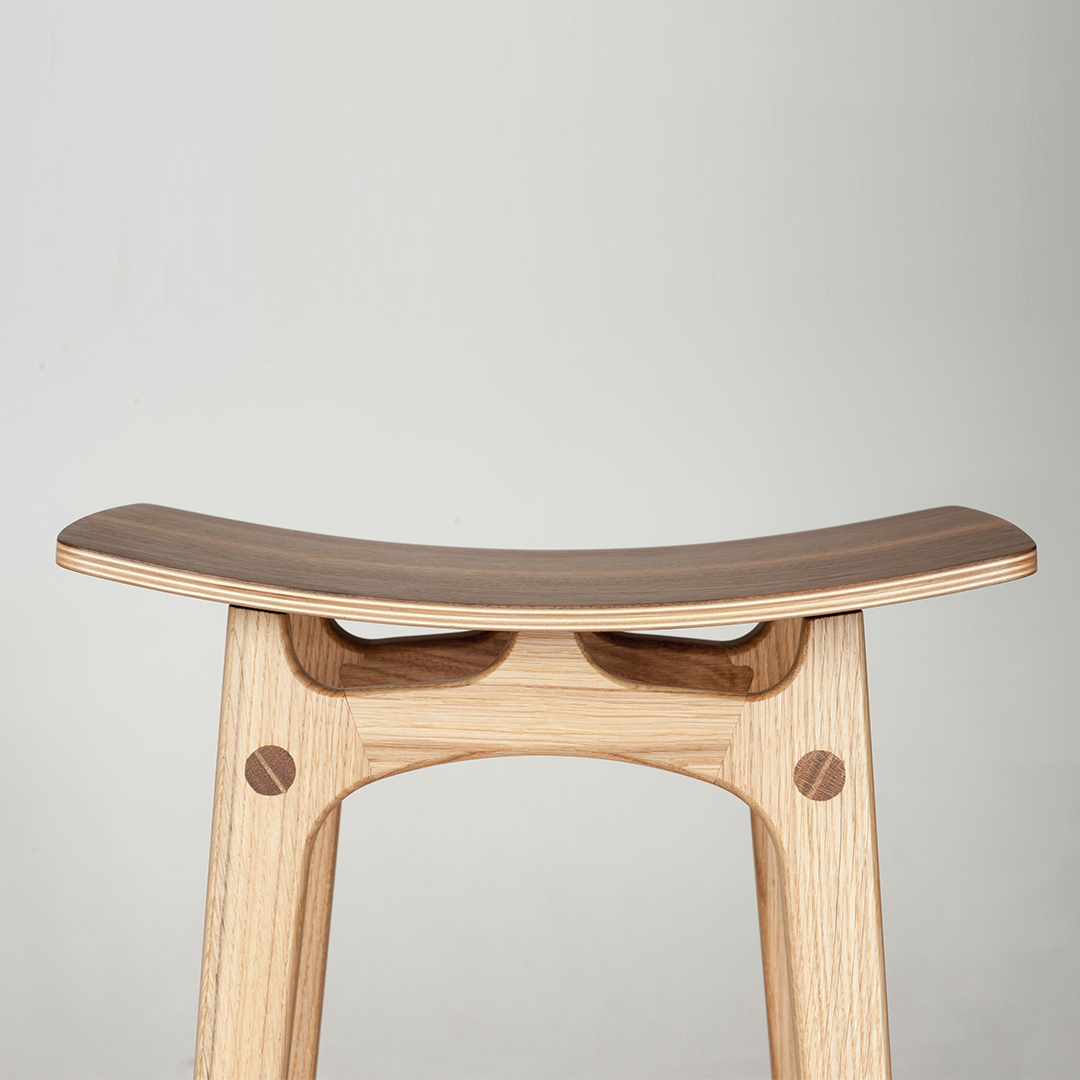Imugo Stool
Rajmund Teofil Hałas
310,00 €
DIMENSIONS:
49 | 39 | 29 cm
MATERIALS:
natural oak, plywood,
natural American walnut veneer
Available on back-order
- The finish can be customized upon request
- Estimated production time: about 3 weeks
imugo STOOL
Professor Rajmund Teofil Hałas' stool has become our inspiration for working on an entire series of seating inspired by the original design from 1960. The IMUGO+ family guarantees an interesting arrangement for modern homes or commercial spaces. Imugo bar stools are perfect for bars, kitchens, dining rooms, and living rooms, while the lower stools will serve as unique decorative additions to any space.
Compared to mass-produced furniture, IMUGO stools stand out with their exceptional style and high quality. Handcrafted production and a reference to the tradition of Polish design make them truly unique objects.
The presented IMUGO models differ in seat colors. When placing an order, you can choose a stool with a white lacquered seat or one covered with natural American walnut veneer and finished with lacquer. The frames are made of oak wood.
DESIGNER

RAJMUND TEOFIL HAŁAS
He was born in Krobia, Greater Poland, into a family with a long tradition in the carpentry trade, which was initiated by his great-grandfather Jakub Węcławski in the mid-19th century. Jakub’s workshop was taken over by his son-in-law, Franciszek Hałas, who taught the trade to his son, Teofil. Teofil then built a furniture factory in 1922. Teofil’s sons, Zygmunt and Rajmund Teofil, continued the family tradition, with Rajmund Teofil obtaining a master carpenter diploma after studying at the Carpentry and Sculpture Gymnasium in Cieplice Zdrój.
In 1951, Rajmund T. Hałas began studying at the State Higher School of Fine Arts (PWSSP) in Poznań, at the Interior Architecture Department, and graduated with a diploma under the guidance of Professor Jerzy Staniszkis.
After his studies, he became involved in the furniture industry and led the Furniture Design Studio, which served the entire industry. At that time, he designed, among other things, the SHELF WITH ADJUSTABLE HEIGHTS (1959) and a group of chairs: RED – WHITE – BLACK (1957-62).
In 1960, he founded the Koło group with Czesław Kowalski (the author of Kowalski Wall Units), Leonard Kuczma, and Janusz Różański. This group initiated efforts to organize the Furniture Biennale in Poznań. After nearly twenty years (in 1978), the Organizing Committee of the 1st International Furniture Triennial was established.
In 1964, he received a scholarship to study at the Helsinki Institute of Industrial Arts, and a year later in the United Kingdom, where he met creators such as Alvar Aalto and Gordon Russell. His travels to the West resulted in the establishment of the Department of Industrial Design at PWSSP in Poznań in 1971, where he led the Inspiring Design Studio. He remained connected to the Poznań university throughout his extremely active life. After retiring as a professor, he served as a consultant in the Design Department and taught the history of architecture and design at the Faculty of Architecture and Design.
At the initiative of Marek Hałas, Professor Hałas’s nephew, the Carpentry and Biskupizna Museum was established in the former furniture factory buildings of his grandfather Teofil in Krobia. The museum is named after Rajmund Teofil Hałas.













